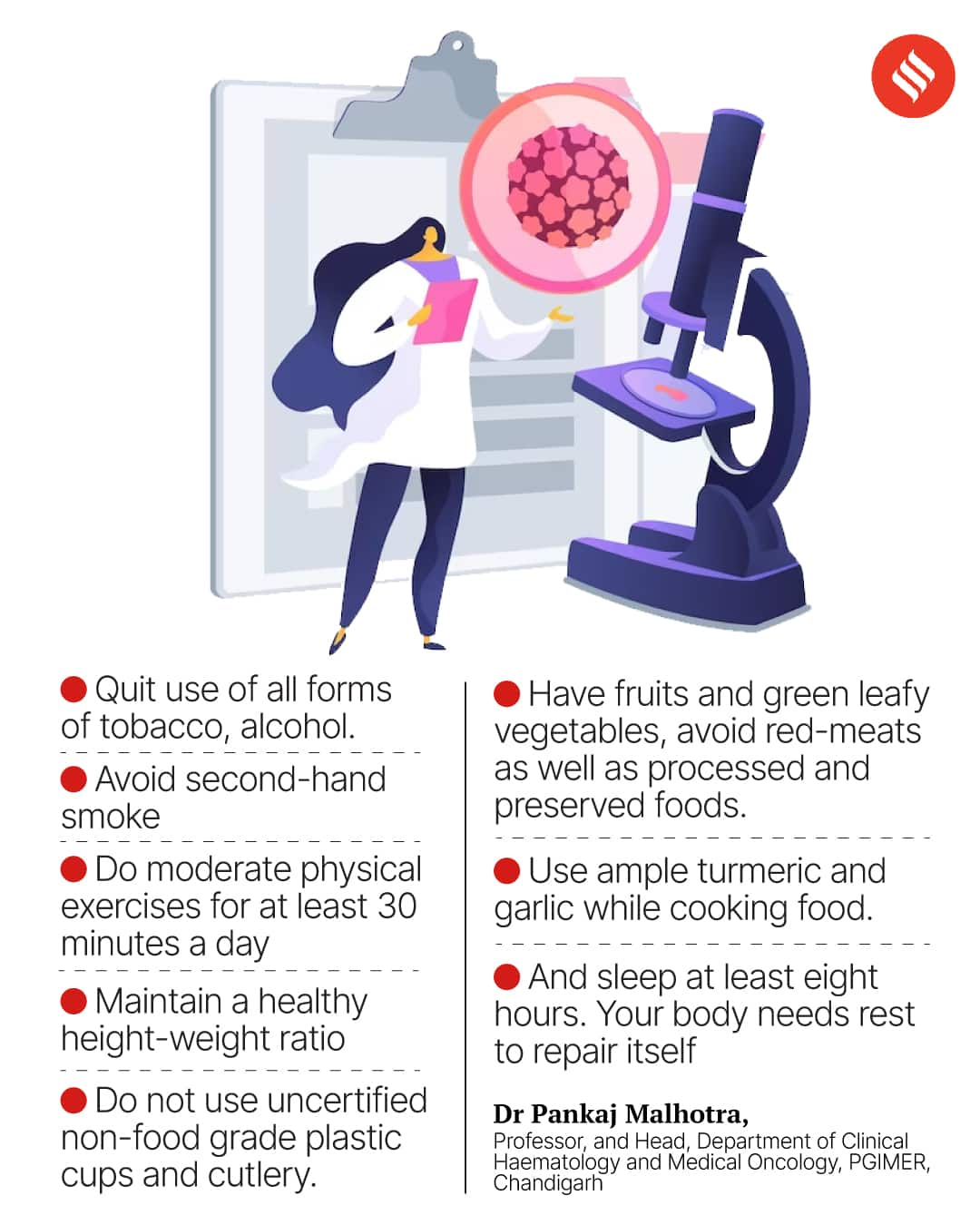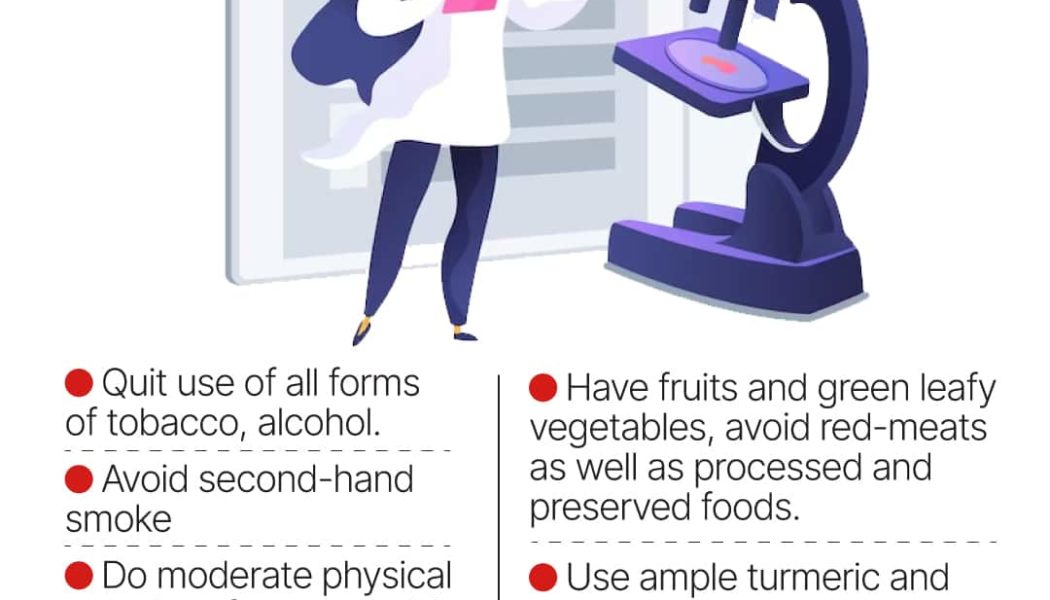The latest cancer study, which has found a 79 per cent increase in new cases of cancer among those under 50 globally in just 30 years, is a wake-up call like no other to understand triggers, go for screening and adopt preventive lifestyle changes. And as the study across 200 countries, including India, shows, we already have a high burden of early onset breast cancer, oesophageal and prostate cancers.
WHAT ARE THE CAUSES?
The study, published in the British Medical Journal (Oncology), lists poor lifestyle choices, pollution and sedentary behaviour as the biggest triggers. Says Dr Amit Bhargava, Director, Medical Oncology, Fortis Cancer Institute, Vasant Kunj, “Most malignancies in all cancer literature are lifestyle-related. The early onset is directly linked to an early exposure to smoking, vaping, drinking, junk and processed foods (all of which have a lot of chemical involvement) increasing couch behaviour because of addiction to devices and low physical activity. So lifestyle triggers are largely multi-factorial. Other than that there are pollutants. We get a lot of sulphur, cadmium and industrial pollutants from the air, which are carcinogens (cancer-causing chemicals) and responsible for all kinds of malignancies and not just lung cancer. In fact, the study shows how our convenient food choices are increasing cancers all along the gastro-intestinal tract.”
That poor lifestyle choices are costing us is evident from the fact that 30 per cent of the young population is getting affected, says Dr MD Ray, Professor and Cancer Surgeon, AIIMS, Delhi. “There is an increased incidence in the less than 45 years age category. And since the study flags early onset breast cancer, the major culprit is estrogen, the hormone that has increased levels because of a sedentary lifestyle. Estrogen is the culprit behind a molecular dysfunction that directly alters a cell’s DNA. Family history increases the risk by 5-10 per cent. Controlling lifestyle and stress can keep the cells dormant. These days 20-22 year-old girls are reporting breast cancer. Almost 15-20 per cent of cancers I see are breast cancer cases,” he adds.
So how do chemical toxins and byproducts in our body cause cancer? “Once they enter the system, there is a direct irritation of the mucosa or the soft cellular lining along our organs and blood vessels. This changes its nature and over time, changes its character. Our genes keep multiplying all the time, so sporadic mutations or dysfunctions can lead to defective cell processes and change the character of the cells, eventually leading to cancer. In fact, prostate and breast cancer are linked to BRCA mutations that are linked to toxic products in our body,” explains Dr Bhargava.
 Lifestyle triggers are largely multi-factorial (Designed by Abhishek Mitra)
Lifestyle triggers are largely multi-factorial (Designed by Abhishek Mitra)
Dr Pankaj Malhotra, Professor, and Head, Department of Clinical Haematology and Medical Oncology, PGIMER, Chandigarh, feels that although there are many non-modifiable causes of cancers, simple lifestyle modifications can lead to significant risk reduction. He explains how smoking (including passive smoking) can increase the chances of cancers in the urinary bladder, oesophagus or food pipe, head, neck and kidney. “Tobacco smoke contains around 70 carcinogens, mostly complex hydrocarbons. About 33 per cent of all cancers can directly or indirectly be attributed to tobacco use or smoking. Apart from smoking, alcohol abuse is another leading preventable cause of cancer in approximately 25 per cent of cancer patients, mainly accelerating cancers of the liver, head and neck, oesophagus, breast and intestines. Similarly, obesity and lack of physical activity can directly or indirectly cause cancers in up to 20 per cent of all cancers while another 16 per cent is caused by cancer-causing pathogens and bacteria. The hereditary or genetic reasons for cancers are seen in about 30 per cent of all cancers like breast, ovarian, colon, pancreas and prostate. In women, the additional factors that can increase cancer risk include delayed first pregnancy, lack of breast-feeding and use of oral contraceptives. In working women especially, work-related stress increases the risk of cancer by up to 70 per cent, as compared to women who are not working.”
TIMELY SCREENING CAN SAVE LIVES
Most Read
The good news is that early detection and appropriate treatment can cure approximately one third of all cancers. Says Dr Sushmita Ghoshal, Professor and Head, Department of Radiotherapy, PGIMER, Chandigarh, “Cancers of the mouth or cervix are known to develop over many years through a continuous process of changes in the tissue. These changes are pre-malignant in the beginning and following constant exposure to the risk factor(s) may convert into full blown cancer. By observing the tissue it may be possible to detect the changes quite early and take appropriate action. Similarly, small nodules in the breast can be diagnosed by methodical physical examination, X-rays or ultrasound. In our country, screening for breast, cervical and oral cancers have been cost-effective. Approximately 40 per cent of cancers can be prevented by modifying lifestyle and exposure to risk factors.”
WHEN SHOULD WE BEGIN CANCER SCREENING
Screening is important even when patients do not have any symptoms. But there is a general protocol, which if adhered to, can be very effective in prevention and containment of disease, says Dr Bhargava. “We classify subjects into high risk, intermediate and standard risk categories. High risk are those who have a family history and we advise them to screen at least ten years before the index case in the family or the age of the last cancer patient in the family. With hereditary genetic profiling, mutated genes can help us predict risk. However, this is an expensive investigation, costing anywhere between Rs 25,000 to Rs 2 lakh, depending on the number of markers. But it is available in our country. Those with intermediate risk, say with co-morbidities, like obesity, hypertension, viral infections and diabetes, tobacco users and alcohol drinkers, should screen themselves after 40 years. The standard category includes people who are physically fit without any risk factors. We ask them to screen by 50. But all Indians should get screened at least once after 40,” he adds.
Advertisement
Of course, the increase in numbers, Dr Bhargava feels, is also the result of early diagnosis and growing awareness, and points to the concern everybody has about early intervention. “Initially, the average age group for breast cancer was 45 to 55 but now it is coming down. When I was at Tata Memorial, around 1997, we would see one or two cases of breast cancer, that too in the late stages. Now, 45 per cent of women get themselves tested early enough and are diagnosed at stage 1 and 2. Awareness can change the scenario,” he adds.









